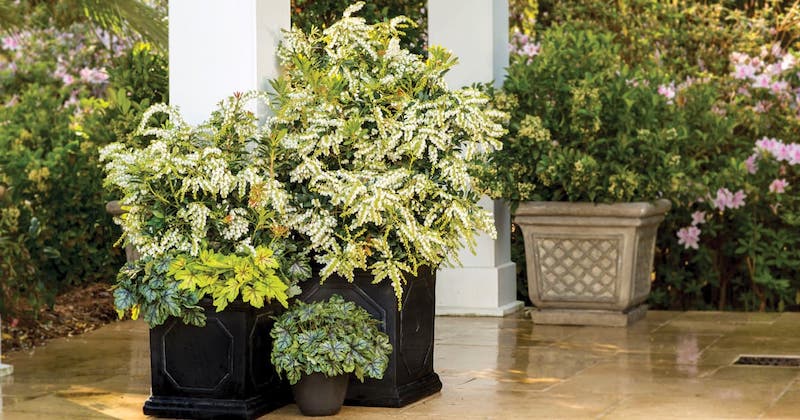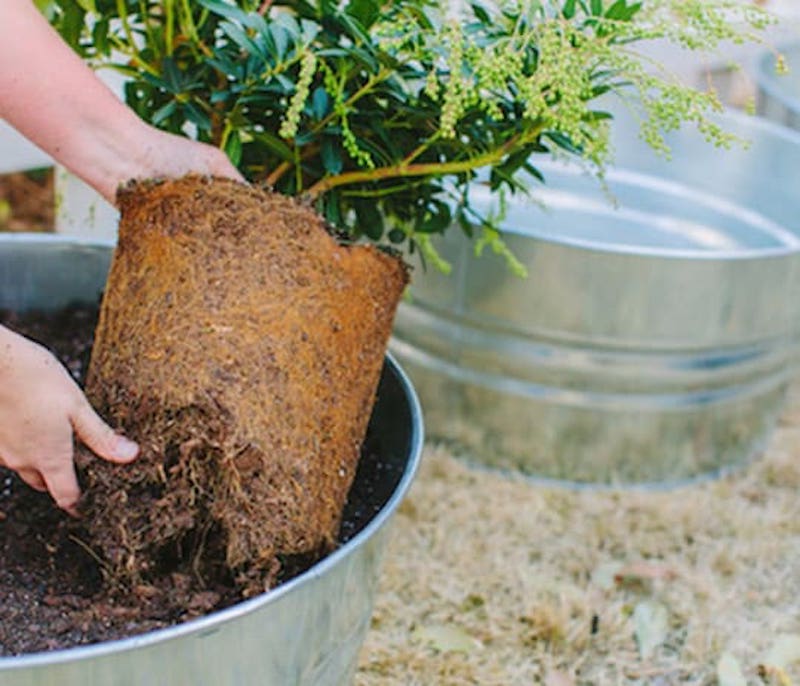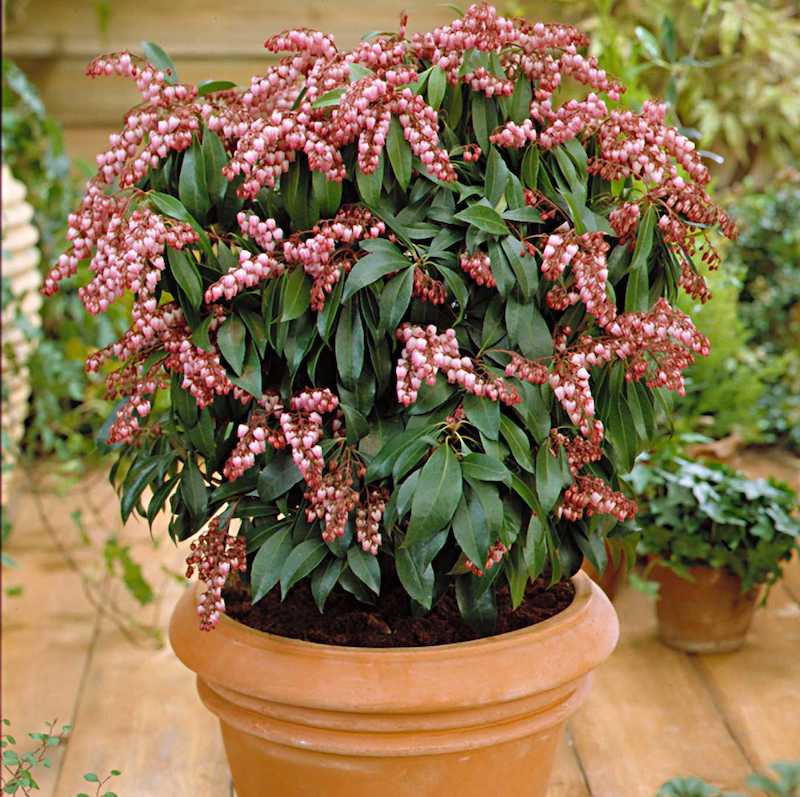Container-grown Pieris could be that extra year-round color that you need at the front step or on a partially shaded deck or patio. Its four seasons of interest make a great backdrop to seasonal annuals or as a solo planting in a decorative pot or planter. The smaller cultivars, such as ‘Cavatine’ or ‘Impish Elf’ are ideal for pots. The medium-sized growers grow well in containers and tend to stay on the smaller size when their roots are constricted in a pot.

Planting Pieris in Pots
Pieris can be planted in pots at any time of the year. They will settle in and establish the best if they get planted early in the spring. Pieris planted alone in a pot will be fine with a 5-gallon container. Planting Pieris as part of a mixed seasonal display will require a container with a diameter of 18 inches or more. Place the container in a spot that receives part shade to part sun. A deck or patio that is in full shade only early in the morning is a good location.
Full sun late in the day due to a western or southern exposure may be too hot during the height of summer or in warmer growing zones. Excellent drainage is a must. Add more holes to the bottom of the pot as needed. Pots should be made from materials that will withstand year-round conditions in your growing zone. Terracotta is not resistant to freezing and thawing.

Best Soil For Pieris in Pots
All-purpose potting soil can be used to plant Pieris. Fertilizing with a formula made for acid-loving plants is a necessity. Often these soils are labeled for other acid lovers like Camellias and Rhododendrons. To keep the potting soil draining freely, do not add heavy garden soil to the mix. Soil from the garden is too dense and lacks sufficient aeration. The addition of perlite or vermiculite to potting soils helps the soil stay loose and fluffy, creating micro air pockets that the roots can easily move through.
Caring For Pieris in Planters
Watering and fertilizing container-grown plants are the most important maintenance tasks. Plants in containers are not able to stretch their roots out in search of more nutrition or moisture like those in the ground. The gardener needs to supply all the nutrition and water the plant needs to survive.

Watering Pieris in Pots
Moisture levels should be monitored regularly, especially during hot and dry weather when plants may need daily water. The amount of watering will depend largely on the size of the container and the heat and humidity of your gardening zone. Water the container until water runs freely out of the drainage holes. Let the water fully absorb and then add more water.
This will ensure that all of the soil is saturated throughout the pot. Pieris plants need about 1 inch of rain or water a week. If your climate has high humidity or rain in the summer, make sure to let the soil dry out in between waterings. Humidity will help to keep pots damp longer and overwatering is a greater risk.
Fertilizing Pieris in Pots
Plants growing in pots require more regular fertilizing than those in the ground. Watering leaches nutrients out of the soil quickly, so they need to be replaced. Using a diluted liquid feed made for acid-loving plants is the easiest way to fertilize. Mix the fertilizer in a watering can and supplement a watering once a month. Fertilome and Neptune’s Harvest are good products that have a complete blend of nutrients.
Winter Care For Pieris in Pots
The main issue to watch for in the winter is poor drainage. Pots can get washed out if placed too close to gutter downspouts or become waterlogged from sitting in standing water on a patio. In climates that have heavy winter rains, pots will need to be monitored regularly to make sure they are draining properly.
Containers that are in exceptionally exposed sites with strong winds or summer sun will need to be moved to a more sheltered location. Windburn can severely damage Pieris. The sun in the winter may be stronger than in the summer in some growing zones. Full sun exposure in the winter will cause sunburn of foliage and branches.
Growing Pieris Indoors
Pieris does not make a good houseplant. It requires exposure to the winter chill to produce good blooms in the spring.
 |
Author Robbin Small - Published 8-11-2022 |
